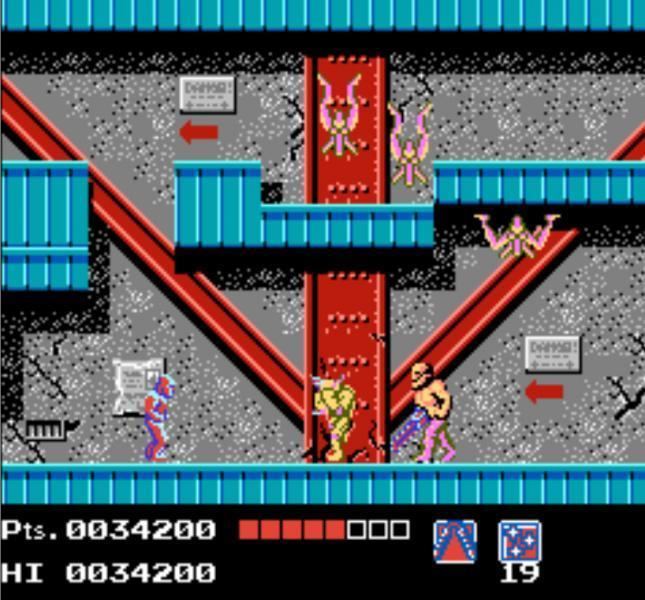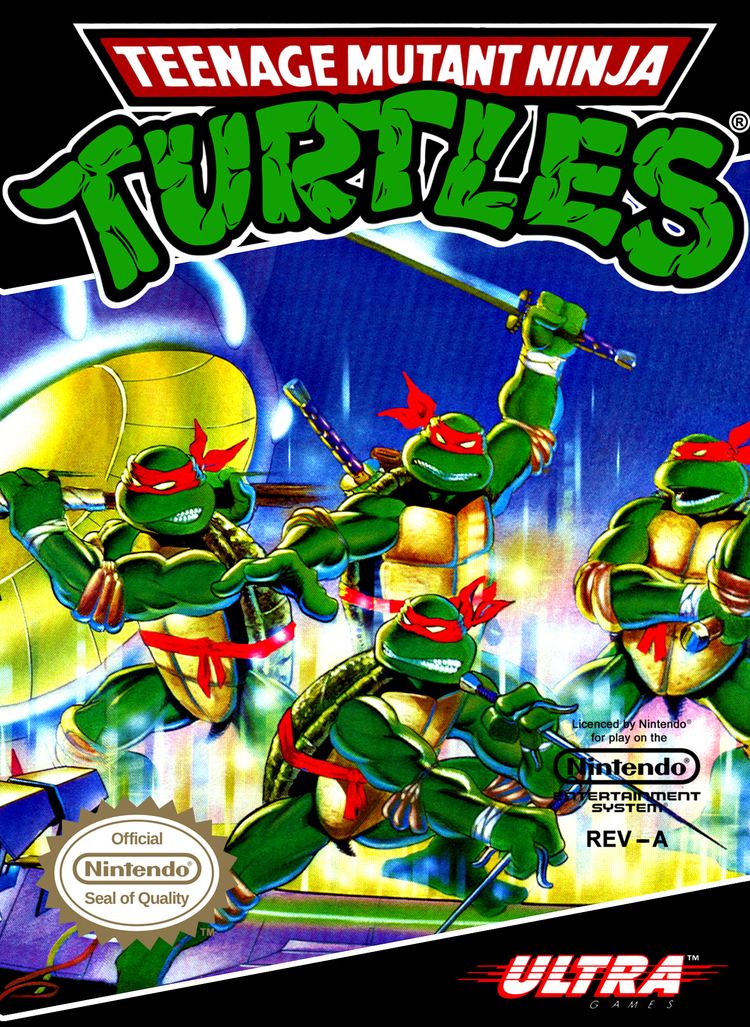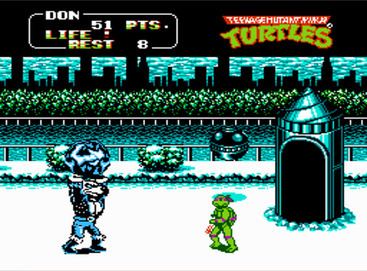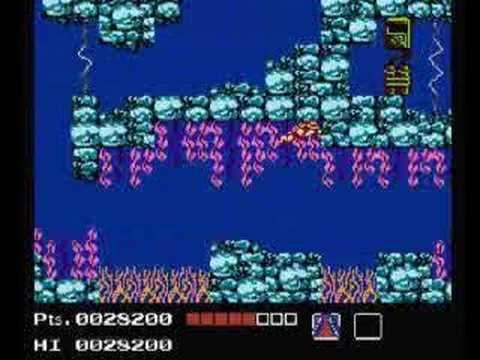Composer(s) Jun Funahashi | Initial release date 1989 | |
 | ||
Publishers Similar Teenage Mutant Ninja Turtles games, Konami games, Other games | ||
Teenage Mutant Ninja Turtles (or Teenage Mutant Hero Turtles in Europe) is a side-scrolling platform game for the Nintendo Entertainment System released by Konami (under the Ultra Games imprint in the USA and the equivalent PALCOM brand in Europe/Australia) in 1989. Alongside the arcade game (also developed by Konami), it was one of the first video games based on the 1987 Teenage Mutant Ninja Turtles animated series, being released after the show's second season, but is a bit truer to the nature of the comic books instead of the show.
Contents

The game was a commercial success, selling over 4 million copies and becoming one of the best-selling titles for the Nintendo Entertainment System.

Plot
The Ninja Turtles (Leonardo, Raphael, Michelangelo, and Donatello) are on a mission to retrieve the Life Transformer Gun from Shredder, a device that could restore their sensei Splinter back to his human form. The Turtles' first objective is to rescue their reporter friend April O'Neil, who is being held captive by Bebop and Rocksteady somewhere in the city. After rescuing April, the turtles must swim underwater to disarm a series of bombs set to destroy a dam, rescue Splinter from the Mecha Turtle, destroy a giant Mouser, find the Technodrome and eventually defeat Shredder.
Gameplay

Teenage Mutant Ninja Turtles is a single-player action game. The player starts the game as Leonardo, but can switch to any of the other Turtles at any time by pressing the Start button to access the information screen. The information screen shows each Turtle's health, whatever special weapon he has obtained, a map grid of the current area, and messages from either Splinter or April. Each turtle's unique primary weapon has different speed, power and reach. When the player's current character runs out of health, falls into a fatal trap, or is run over by a Roller Car, he is captured by the enemy, forcing the player to change to one of the remaining Turtles. The player loses the game when all four Turtles have been captured. There is an opportunity to rescue a captured Turtle once in each stage beginning in Stage 3. There are a total of six stages in the game.

The player navigates the mission map in an overhead view as they travel to doors, manholes or other entrances to the side-scrolling interior levels, which represent the primary gameplay. In the overhead view, the player can move in the four cardinal directions and use their primary weapon in a single type of attack. As the game progresses, more and more obstacles and enemies appear in the overhead maps.

In the side-scrolling levels, the Turtles can jump or crouch and attack either with their primary weapons (while jumping, walking, or crouching), or use one of the alternate weapons that they have picked up along the way. These special weapons include single shurikens (throwing stars), triple shurikens (launches three stars simultaneously in a spreading pattern), boomerangs, and the "Kiai", a scroll that expands into a crescent-shaped beam and inflicts devastating damage on even boss characters. These items are occasionally dropped by enemies. The special weapons are obtained in limited quantities, although the boomerangs can be reused if the player catches them on the return. The primary weapon can be "aimed" upwards or downwards.
In some levels, there is a specific objective (obtaining an item, defeating a boss, etc.). However, in most levels the goal is to reach the exit and return to the overhead map in a previously inaccessible location. The player encounters enemy characters, acquires weapons and special items, and collects pizza to restore health.
In the second half of Stage 2, the Turtles dive into the Hudson River (using an underwater version of the side-scrolling gameplay). In this level, the Turtles must navigate a number of traps, with a time limit of two minutes and twenty seconds to find and disarm eight time bombs.
Regional differences
The game was released for the Family Computer (or Famicom) in Japan a few months earlier than the American NES version under the title of Geki Kame Ninja Den (激亀忍者伝, which roughly translates to "Legend of the Radical Ninja Turtles"). This was the first T.M.N.T. product released in the country, predating the Japanese dub of both the first film and the animated series, resulting in the unusual name change. Subsequent T.M.N.T. video games released in Japan kept the franchise's original title. While graphics and gameplay are virtually identical to its NES counterpart, the plot underwent a slight change: April O'Neil, who is simply a friend of the Turtles in the American version, is established to be Splinter's daughter in the Famicom version.
The game was released as Teenage Mutant Hero Turtles in all European territories due to the series' re-branding in Europe. Despite being in the same region code as Europe, the Australian version was released with the series' original title, with a different box.
Ports
The game was ported to various home computer platforms in 1990, including the Commodore 64, ZX Spectrum, Atari ST and Amiga. The Spectrum version of the game was number 1 in the UK sales chart from March until August 1991. The DOS version is infamous, as it contains a gap that is impossible to cross without cheating.
It was also released in 2007 on the Wii's Virtual Console. It was released for the Wii in Europe and Australia for 500 points which was later raised to 600 Wii Points. In North America, it was released for Wii on April 2, 2007 for the price of 600 points—100 points more than the average NES game—due to a licensing issue. It was the first licensed game to appear on the North American and European Virtual Console. Due to licensing issues, it was later removed from the Wii Shop Channel in Japan on January 24, 2012 and in North America and Europe on January 26, 2012.
Reception
The original NES version was a major success, with over 4 million copies sold. It was one of the best-selling third party NES games. A series of computer ports were developed and rushed out in time for that year's Christmas season, but did not fare nearly as well, commercially or critically.
Nintendo Power gave the game their 1989 Game of the Year award.
